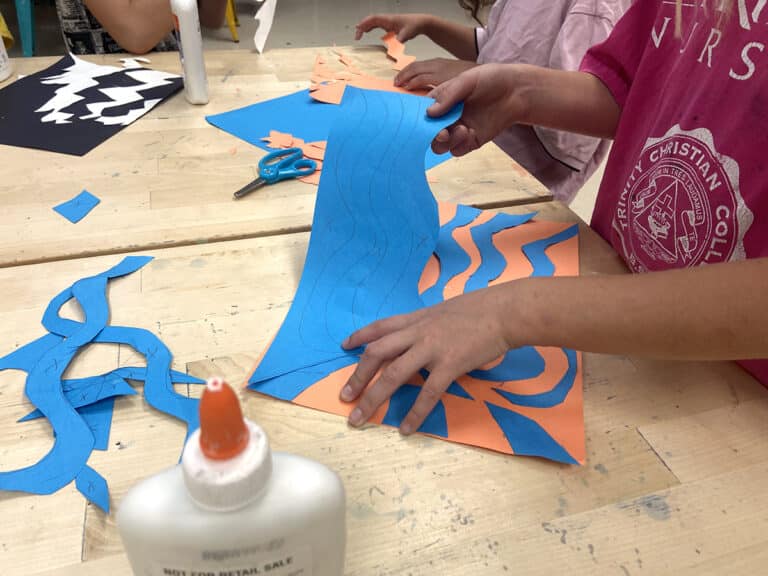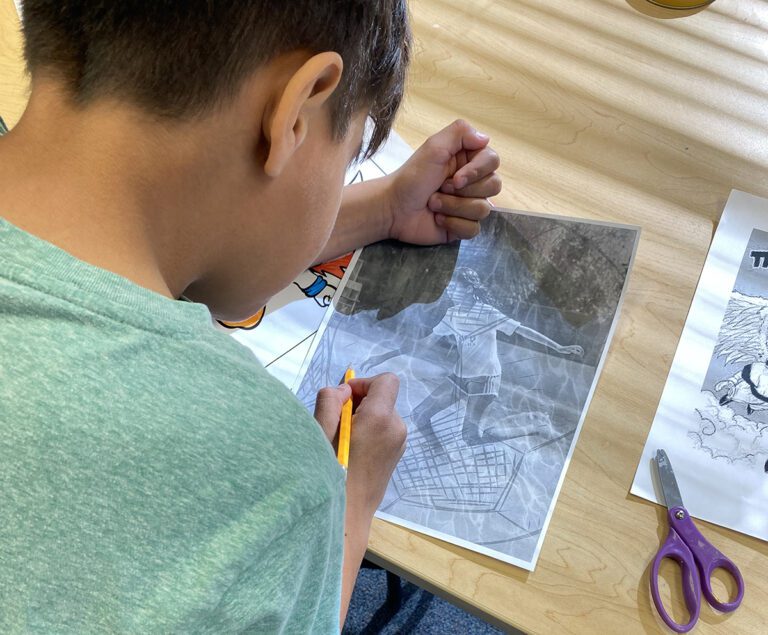I read a post online that stated, “Art without meaning is decoration.” The quote caused me to pause and consider the concept. Does all art have meaning? There are some obvious examples of art that incorporate meaning. Conceptual art fits the bill swimmingly. I considered the Impressionists. Though their art seems decorative in nature, their purpose was to capture the effects of light. Even art from the Middle Ages was used to educate the illiterate. It seems apparent that art should have some sort of meaning. If so, what about our students’ work?
Should We Strive For Art With Meaning?
In some ways, we tend to teach art like we would teach someone to construct a house. A construction worker needs a certain skill set to properly saw wood and swing a hammer. Likewise, we teach our students art skills. To successfully paint an image, a student needs to know how to mix colors and create tints and shades. Though a construction worker has the skills, if he or she doesn’t apply purpose to the sawing and hammering, it will only result in a pile of nailed lumber. What does this analogy say of the artwork that is created with technical skills but without meaning? For example, in the photo below, is the decorative mural really art?

What Is Meaning In Art?
Before we decide if student art needs to have meaning, we might need to understand what it means to have meaning in art. Does all student work need to have meaning? Not necessarily. Exercises don’t need meaning per say. An exercise that teaches shading or perspective has a purpose, but the art produced doesn’t need to communicate anything beyond the skill acquired. But what of other artwork, those pieces more summative in nature? Is it enough to recreate an image or should the artist make a conscious effort to specifically convey an idea?
Do Assignments Hinder Meaning?
There is a difference between an artist who applies meaning when creating art and the art student who is following the teacher’s directions. If our lessons overly dictate the solutions our students are to resolve, it is possible we eliminate the meaning in art. In that situation, we may inadvertently be directing our students to create decorations.
Working Meaning Into Our Lessons
As art teachers, we should be asking our students to apply meaning to their art. Like a reporter who deliberately asks open ended questions, we too need to make sure our topics and themes are open enough to allow students to apply meaning. We can assist students by asking them why they choose to create certain images over others and what significance those images hold. We may also ask what emotion, idea or concept they are trying to express to their audience. Banksy would provide a great study here.

To say that art without meaning is decoration implies that all art must have meaning. In some ways, this is true. Even the most seemingly innocuous image may hold meaning to the person who created it. Not all artwork made needs to have a deep or conceptual backstory. Still, asking our students to think about the reasons why they create may help them design richer works of art.
{image source} {image source}
Is art without meaning decoration? How do you define meaning in art and how do you relate that to your students?
How have you encouraged your students to add meaning to their art?
Magazine articles and podcasts are opinions of professional education contributors and do not necessarily represent the position of the Art of Education University (AOEU) or its academic offerings. Contributors use terms in the way they are most often talked about in the scope of their educational experiences.




